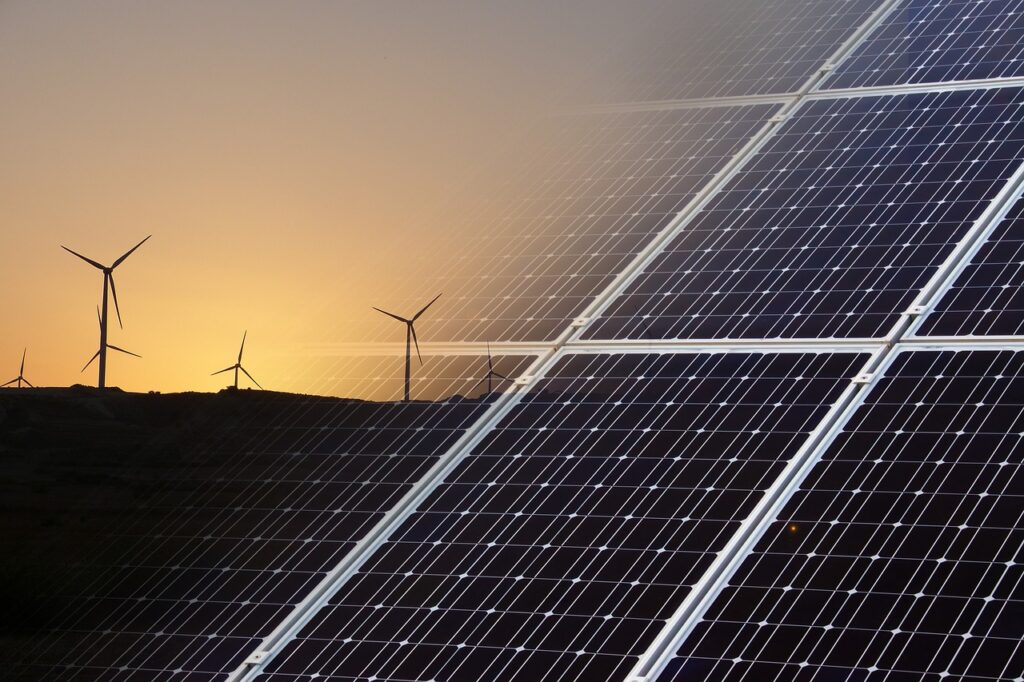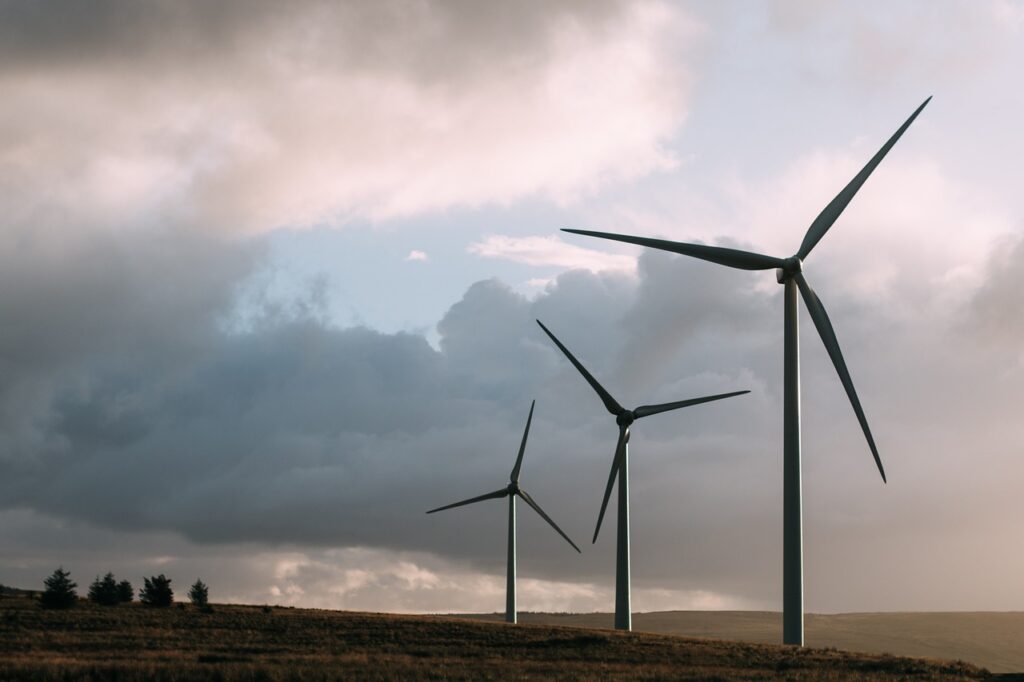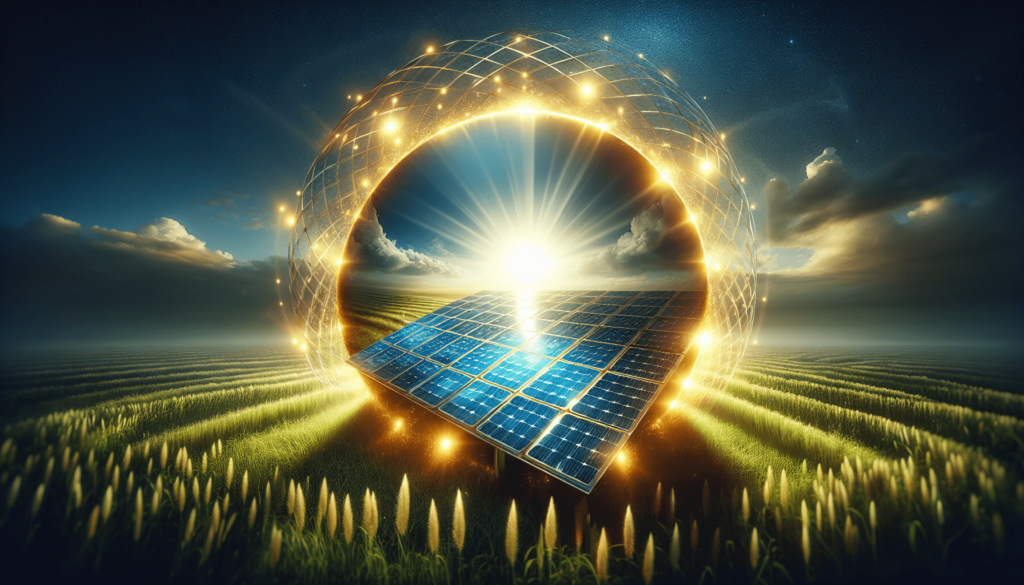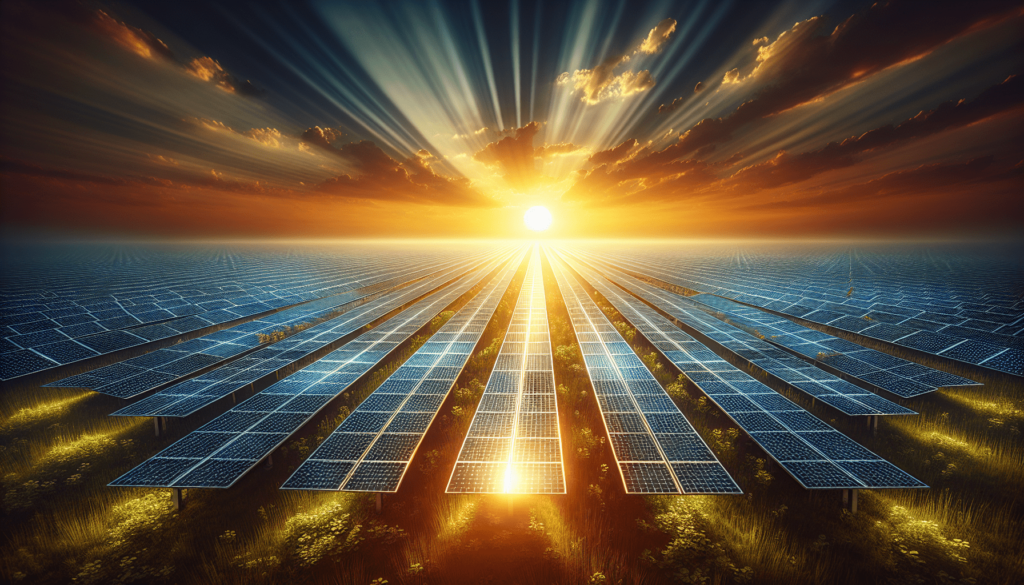Exploring the Future of Electricity Generation
Share

If you’ve ever wondered about the future of electricity generation and where it will come from, look no further. In this article, we’ll take a fascinating journey into the possibilities and innovations shaping the way we produce electricity. From renewable energy sources like solar and wind power to groundbreaking advancements in nuclear energy and energy storage, we’ll explore the exciting developments that could shape the greener, more sustainable future of electricity generation. So buckle up and get ready to envision a future where the lights stay on without harming the planet.

Renewable Energy Sources
Renewable energy sources are becoming increasingly popular as a way to reduce our reliance on fossil fuels and mitigate the effects of climate change. One of the most well-known and widely used renewable energy sources is solar power. Solar power harnesses the energy from the sun and converts it into usable electricity. This is accomplished through the use of solar panels, which are made up of photovoltaic cells that absorb sunlight and convert it into direct current (DC) electricity.
Another renewable energy source that is gaining traction is wind power. Wind power is generated by wind turbines, which capture the kinetic energy of the wind and convert it into electricity. These turbines consist of large blades that spin when the wind blows, and this rotational motion is then used to generate electricity. Wind power has the advantage of being able to generate electricity even at lower wind speeds, making it a versatile and reliable source of renewable energy.
Hydropower is another significant renewable energy source that has been used for centuries. Hydropower harnesses the energy of flowing or falling water to generate electricity. This is typically done by constructing dams, which create a reservoir of water that can be released through turbines. As the water flows through the turbines, it spins them and generates electricity. Hydropower has the advantage of being a consistent and reliable source of renewable energy, as long as there is a sufficient water source.
Geothermal energy is a less commonly known but promising renewable energy source. Geothermal energy harnesses the heat from beneath the Earth’s surface to generate electricity. This is achieved by drilling deep into the Earth and tapping into hot water or steam reservoirs. The hot water or steam is then used to power turbines, which generate electricity. Geothermal energy is a renewable energy source that is available 24/7 and has the potential to provide a consistent and reliable source of power.
Nuclear Power
While renewable energy sources have gained momentum in recent years, nuclear power still plays a significant role in electricity generation. Nuclear power harnesses the energy that is released during nuclear reactions to generate electricity. Currently, the most common type of nuclear power in use is fission power. Fission power involves splitting the nucleus of an atom, typically uranium or plutonium, into smaller fragments, releasing a significant amount of energy in the process.
Another form of nuclear power that shows promise for the future is fusion power. Fusion power involves combining the nuclei of atoms, typically isotopes of hydrogen, to produce helium and release a massive amount of energy. Fusion power has the potential to produce great amounts of clean energy without the generation of radioactive waste. However, fusion power is still in the experimental stage and has not yet been successfully harnessed for large-scale electricity generation.
In addition to fission and fusion power, there are also advanced reactor designs being explored. These advanced reactor designs aim to enhance the safety, efficiency, and sustainability of nuclear power. Some of these designs include small modular reactors (SMRs) and molten salt reactors (MSRs). SMRs are smaller and more flexible than traditional nuclear reactors, making them suitable for a variety of applications. MSRs use liquid instead of solid fuel and have the potential to produce less radioactive waste and operate at higher temperatures, increasing their efficiency.
Energy Storage
Energy storage plays a crucial role in the future of electricity generation. As renewable energy sources such as solar and wind power depend on external factors like sunlight and wind, energy storage enables the capture and utilization of excess energy for times when these sources are not readily available. There are several energy storage technologies being developed and implemented.
Battery technology is a widely used form of energy storage and is commonly found in everyday devices like smartphones and laptops. In the context of electricity generation, large-scale battery storage systems are becoming increasingly popular. These systems store excess energy during times of low demand and release it when demand is high. Battery storage is versatile and scalable, making it suitable for various applications, from residential to utility-scale.
Pumped hydro storage is another form of energy storage that utilizes the power of water to store and release energy. This technology involves pumping water from a lower elevation to a higher elevation when there is an excess of electricity in the grid. When electricity demand is high, the water is released from the upper reservoir, flowing through turbines to generate electricity.
Flywheel energy storage is a technology that utilizes the rotational energy of a spinning flywheel to store and release energy. This technology involves spinning a rotor at high speeds to store energy and using this stored energy to generate electricity when needed. Flywheel energy storage systems are often used in applications where quick and short bursts of energy are required, such as stabilizing the grid during sudden changes in demand.
Smart Grids
Smart grids are an innovative approach to managing and optimizing the distribution of electricity. A smart grid integrates advanced communication and control technologies into the existing electrical grid infrastructure, allowing for more efficient and reliable electricity delivery. There are several key components of smart grids that contribute to their effectiveness.
Grid modernization involves upgrading the existing electrical grid infrastructure with advanced technologies and equipment. This includes the deployment of smart meters, which provide real-time monitoring of electricity consumption and enable two-way communication between the utility and the consumer. Grid modernization also includes the integration of sensors and automation technologies to enhance grid performance and reliability.
Demand response is a key feature of smart grids that enables consumers to actively participate in managing their electricity usage. Demand response programs incentivize consumers to reduce or shift their electricity consumption during times of peak demand. By doing so, consumers can help balance the grid and alleviate the strain on the system, ultimately leading to a more stable and efficient electricity supply.
Microgrids are localized grids that can operate independently or in conjunction with the main electrical grid. They consist of a combination of distributed generation sources, energy storage systems, and control technologies. Microgrids offer several benefits, including increased resiliency, the ability to integrate renewable energy sources, and the potential for localized power generation and distribution.

Distributed Generation
Distributed generation refers to the generation of electricity from multiple small-scale sources located closer to the point of consumption. This decentralized approach to electricity generation offers several advantages over traditional centralized power plants.
Decentralized power plants are a form of distributed generation that involves the installation of small-scale power plants in various locations. These power plants can include solar farms, wind farms, or even smaller gas-fired generators. Decentralized power plants offer several benefits, including increased grid resiliency, reduced transmission losses, and the ability to utilize local energy resources.
Rooftop solar panels are another form of distributed generation that is becoming increasingly popular. Rooftop solar panels enable individual homeowners and businesses to generate their own electricity using solar power. By installing solar panels on rooftops, individuals can reduce their reliance on the grid and potentially contribute excess energy back to the grid.
Electric Vehicles
The increasing adoption of electric vehicles (EVs) creates new opportunities and challenges for the electricity grid. Integrating EVs with the grid has the potential to support renewable energy generation and enable more efficient energy management.
Integration with the grid involves connecting electric vehicles to the grid infrastructure, allowing for bidirectional energy flow between the vehicle and the grid. This enables EVs to not only draw energy from the grid but also provide excess energy back to the grid when needed. By utilizing the battery capacity of EVs, it is possible to store and utilize renewable energy more effectively.
Vehicle-to-grid (V2G) technology is an emerging concept where electric vehicles can act as mobile energy storage devices. With V2G technology, EVs can supply electricity to the grid during times of high demand or when renewable energy generation is low. This allows EV owners to earn revenue by selling excess electricity back to the grid and provides additional flexibility and stability to the grid.

Carbon Capture and Storage
Carbon capture and storage (CCS) technologies aim to capture and store carbon dioxide emissions from power plants and industrial sources to prevent them from entering the atmosphere. This has the potential to play a crucial role in reducing greenhouse gas emissions and mitigating climate change.
Direct air capture (DAC) is a form of CCS that involves capturing carbon dioxide directly from the air. This is done through the use of specialized equipment that absorbs carbon dioxide molecules and subsequently releases them in a concentrated form for storage or utilization. DAC technology has the potential to capture and remove carbon dioxide emissions from various air sources, including industrial facilities and even the atmosphere.
Carbon sequestration involves storing carbon dioxide emissions underground in geological formations. This can be done through various methods, including injecting carbon dioxide into deep underground reservoirs or utilizing the carbon dioxide for enhanced oil recovery. Carbon sequestration provides a means to permanently remove greenhouse gases from the atmosphere, mitigating climate change.
Emerging Technologies
Artificial intelligence (AI) has the potential to revolutionize the electricity generation and distribution systems. AI technologies can optimize electricity demand and supply by utilizing predictive algorithms and real-time data analysis. For example, AI can predict electricity demand patterns and adjust power generation accordingly to ensure a reliable and efficient supply.
The Internet of Things (IoT) refers to the interconnection of devices and sensors via the internet. In the context of electricity generation, IoT can enable real-time monitoring of power generation assets, facilitate automatic communication between devices, and improve overall system efficiency. IoT technologies can also enhance grid management and enable better integration of renewable energy sources.

Government Policies
Government policies play a critical role in shaping the future of electricity generation. Renewable energy incentives, such as tax credits and subsidies, encourage the adoption and development of renewable energy sources. These incentives make renewable energy more economically viable and attractive to businesses and individuals.
Carbon pricing is another government policy measure that aims to internalize the social and environmental costs of carbon dioxide emissions. By placing a price on carbon emissions, industries and consumers are incentivized to reduce their carbon footprint and transition to cleaner energy sources. Carbon pricing can drive investment in renewable energy and incentivize the development of carbon capture and storage technologies.
Public Opinion and Education
Promoting energy efficiency is essential for reducing electricity demand and minimizing environmental impact. Public education campaigns can raise awareness about energy-saving practices and encourage individuals to adopt more energy-efficient behaviors. This can include simple actions like turning off lights when not in use, using energy-efficient appliances, and insulating homes to reduce energy loss.
Increasing awareness about the importance of renewable energy and its benefits can also influence public opinion and drive support for clean energy policies. By educating the public about the environmental, economic, and social advantages of renewable energy, individuals are more likely to support its implementation and advocate for its continued development.
In conclusion, the future of electricity generation lies in a combination of renewable energy sources, advancements in nuclear power, energy storage technologies, smart grids, distributed generation, electric vehicles, carbon capture and storage, emerging technologies, supportive government policies, and public opinion and education. By embracing these innovations and adopting sustainable practices, we can create a more efficient, resilient, and environmentally friendly electricity system for generations to come.


